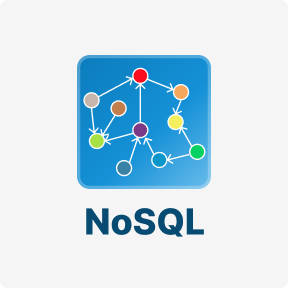Maybe this is something as simple as altering algorithm settings on how customers are contacted or interact with the app. During that time, it is important to keep track of data to see where you’re making strides in reaching your overall goals. Once your new AI program or technology is operational, it is time to test the system for a predetermined period of time.
While concerns exist, such as technology dependence and potential workforce reduction, most business owners foresee a positive impact from AI implementation. The anticipated benefits of ChatGPT, such as generating content quickly, personalizing customer experiences and streamlining job processes, demonstrate the transformative potential of AI in various aspects of business. But while technology did bring major updates, implementations often failed to live up to the sky-high expectations. For example, large-scale ERP systems like SAP or Oracle provided a useful IT backbone to exchange data, yet also created very rigid processes that were hard to change past the IT implementation. Since then, process management typically involved only incremental change to local processes — Lean and Six Sigma for repetitive processes, and Agile Lean Startup methods for development — all without any assistance from technology.
Products and services
AI essentially enables shorter cycles and cuts the time it takes to move from one stage to the next — such as from design to commercialization — and that shortened timeline, in turn, delivers better and more immediate ROI. Plus, focus on AI that’s available as a supported product/service, rather than something still in development. Just because you have AI projects out of development and testing, and contributing to your business, that doesn’t mean you’re done. Just as provisioning infrastructure or updating your company’s web and social presence is never done.

Helana Scheepers is a Professor in the School of Business, Law and Entrepreneurship at Swinburne University of Technology, Melbourne, Australia. She is currently the Academic Director Research Training for the School of Business, Law and Entrepreneurship. Her research interest centres on IT-based innovations in organisational contexts. She has studied the development, management and adoption of information technology (such as mobile technology, enterprise resource planning systems) by large and small organisations. She has published papers in the European Journal of Information Systems, Australian Journal of Information Systems, Information Systems Journal, International Journal of Medical Informatics, Journal of Computer Information Systems among others.
Information & Management
Tang said a business should know what it’s capable of and what it’s not from a tech and business process perspective before launching into a full-blown AI implementation. Include accessibility features such as image or text-to-speech technology to support people with dyslexia or vision or motor impairments. Powered by OpenAI’s GPT-4 language model, it allows users to send images via the app to an AI-powered Virtual Volunteer, which will answer any question about that image and provide instantaneous visual assistance for a wide variety of tasks. One of the most significant ways AI can save you money is by automating specific processes.
In addition, this move has sparked a general need to provide more transparency of the entire process from data collection to outcome generation (Loyola-Gonzalez, 2019). A lack of explainability practices and low transparency hampers individuals trust in AI systems and leads to non-use (Samek & Müller, 2019). In addition, cases of AI use for customer and citizen interaction (e.g. chatbots) that have not taken into account human-centric principles have resulted in frustration and complaints from users, hampering the corporate image (Marcondes et al., 2019). AI’s disruptive potential can drive business model innovation toward sustainability (Toniolo et al., 2020). Sustainable business models describe how organizations create, deliver, and capture value in a way that contributes to the sustainable development of the company and society (Toniolo et al., 2020).
Do I understand the legal, privacy, compliance, security implications of building AI solutions at this company?
But first, companies need an honest assessment of their starting point across the nine dimensions. Even if it’s rough, it assigns realist medium-term targets that account for the barriers to change — skilled talent, investment capacity, and critical infrastructure such as the migration of data from legacy systems to the cloud. While the ambition can be boundless, the steps cannot be too small — most leaders started with using data and simple tools to make decisions, then moved to more advanced techniques as they built maturity and familiarity with their data.
- The goal of all business processes is to convert inputs into valuable outputs, and new technology is expected to improve these processes through radical transformation (Mishra & Pani, 2020).
- It is essential to understand which approaches are the best fit for a particular business case and why.
- “You don’t need a lot of time for a first project; usually for a pilot project, 2-3 months is a good range,” Tang said.
- Businesses, especially large enterprises, have a deluge of data coming in every day and your ability to get insights out all the numbers that you collected is crucial in today’s marketplace.
- Businesses are used to AI playing a supporting role in their operations, automating tasks to lighten workloads.
Now that the preliminary stages of AI implementation are completed, the actual implementation of AI comes into play. Let’s see how businesses can add value from AI by looking at an Exadel case study. This real-life example shows how adopting AI solutions automated manual work, enabling employees to free up time and concentrate on more critical tasks. A recent survey by Deloitte AI Institute covered the leading AI PracticesOpens a new window for potentially AI-fueled organizations. Businesses need to rethink their business models to benefit from AI in total volume. You can’t just plug AI into an existing process and expect positive results or valuable insights.
Improved Customer Interactions
If you have a physical customer service department, there are only so many people they can talk to over the day. AI does not have such limitations and https://www.globalcloudteam.com/ thus allowing you to cast a much wider net. The next benefit of such an AI process is the ability to offer real-time assistance to your customers.

It helps me maintain my productivity and independence, and ultimately it enhances my overall well-being despite the challenges posed by my condition. As they use AI in more areas of the enterprise — from personalizing services to aiding in risk management to supporting innovation — organizations will see improved productivity, reduced costs, higher efficiency and possibly new growth opportunities. When you can look at concrete facts like order times, sales improvements, productivity and achievements, you can make bigger decisions about how to implement AI in your business. For this step in the process, you’ll want to brainstorm with various teams like sales, marketing, and customer service to learn what they feel would best help the company reach these goals.
Estimate your project
To answer this question, the impacts of AI at both the process- (first-order) and firm-levels (second-order) should be studied. How does AI change business processes, and how does this lead to competitive performance? In taking a more holistic perspective on ethical and moral aspects surrounding AI, several public and private ai implementation process bodies have initiated working groups with the aim of defining key principles that should underlie AI use (European Commission, 2019a). A recent report published by the European Commission, highlights seven key dimensions that organizations should consider when deploying AI applications (European Commission, 2019b).

“The specifics always vary by industry. For example, if the company does video surveillance, it can capture a lot of value by adding ML to that process.” Artificial intelligence (AI) is clearly a growing force in the technology industry. AI is taking center stage at conferences and showing potential across a wide variety of industries, including retail and manufacturing.
Unintended Consequences and Negative Impacts
When executives think about strategy automation, many are looking too far ahead—at AI deciding the right strategy. For example, a plumbing company that uses AI to dispatch emergency repair personnel and gives the customer real-time GPS tracking of where the technician is at could save a ton of time and effort. Ultimately, this leads to a higher level of customer satisfaction and a better reputation as an organization. Once you have a reasonable amount of data as to how well a particular solution is working for your company, you can start to make refinement changes.
